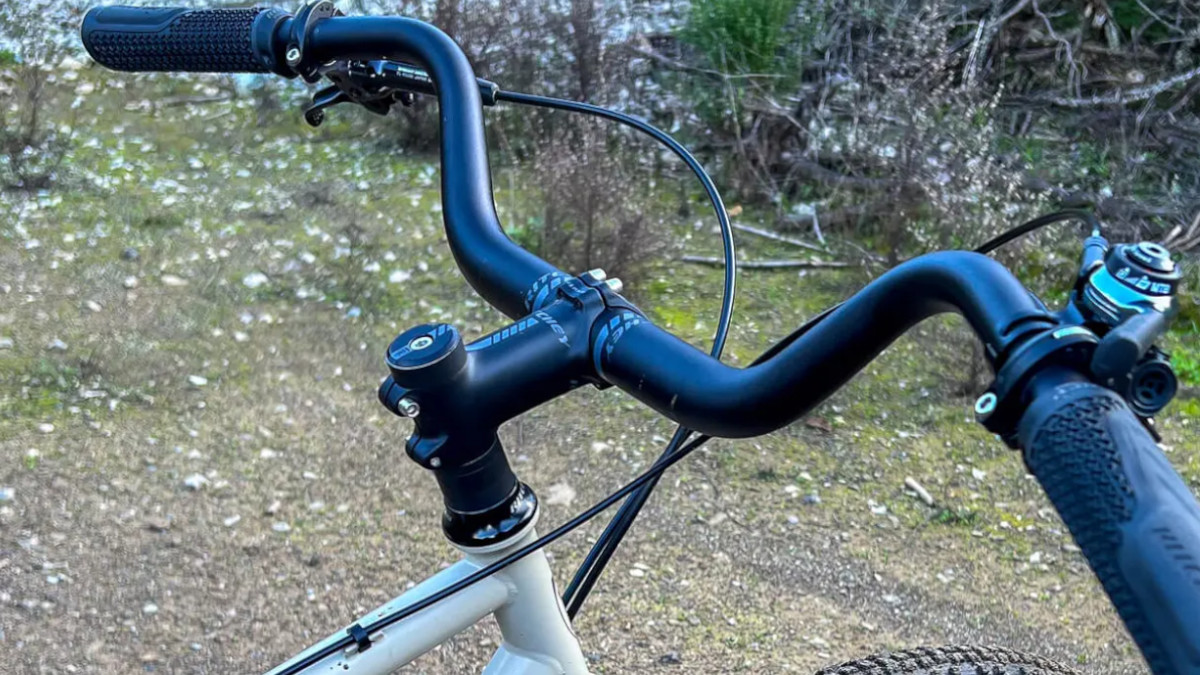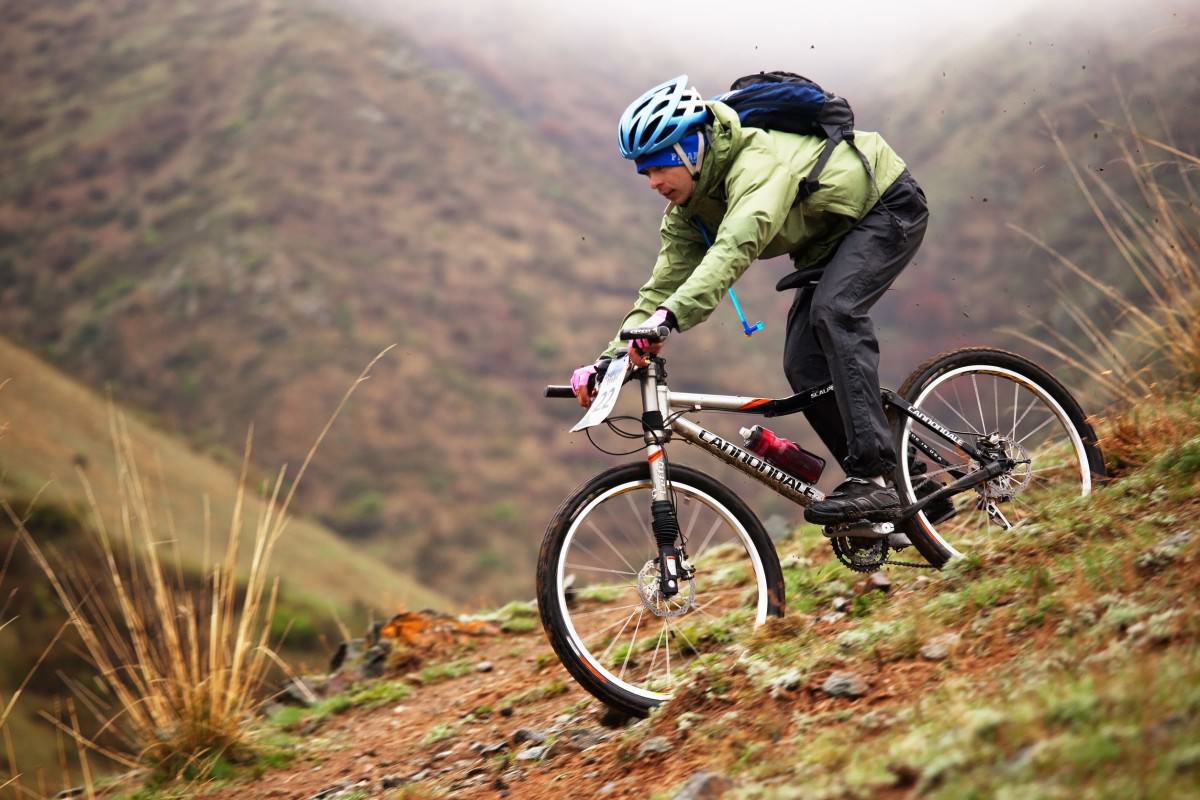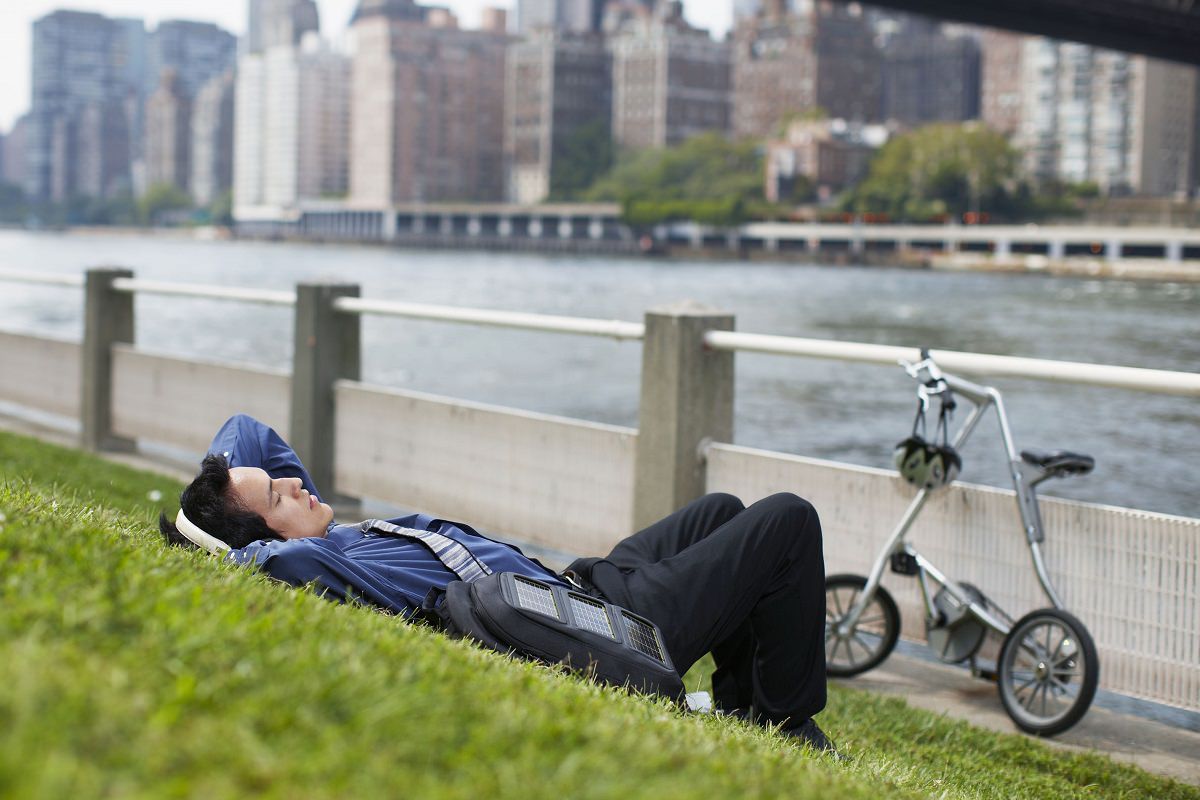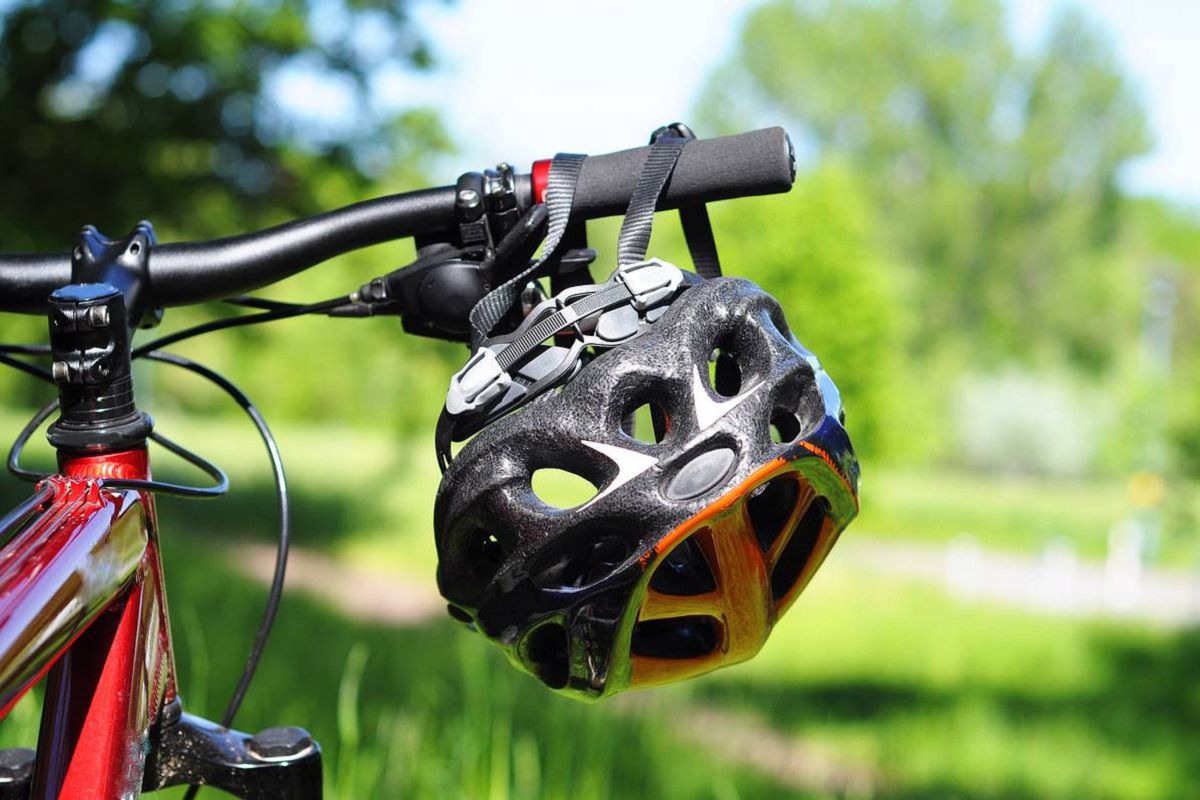Chain breaks are the most common form of mechanical failure faced by many cyclists. Your chain can break due to many reasons including Wear and Tear, An Impact, or even Improper Maintenance. Chain breaks while you are riding at a high speed can be dangerous. There are many famous cyclists who suffered crashes due to chain failure.
Tony Martin’s chain broke when he was riding at a really high speed in the 2016 Tour de France. As a result, he suffered a broken collarbone, a concussion, and several other injuries. Following this event, in 2019 Chris Froome crashed during the Critérium du Dauphiné fracturing his right femur. The reason? A broken chain!
This is why you should know why a chain breaks to learn how to prevent it!
Structure Of A Bicycle Chain
Before I explain to you why your bicycle chain is breaking, it is important to understand the anatomy or structure of the chain.
1. Understanding The Series Of Links
A bicycle chain is made of a series of links that are connected. These links are joined using pins and bushings. Bushings surround the pins and help them rotate in the chain while pins are cylindrical in shape that run through inner and outer plates. There are the following two types of links:
Inner Plates
Inner plates are the small parts of the chain. They engage with the cogs and teeth of the chainrings.
Outer Plates
Outer plates are larger and their main function is to provide structural support to the chainrings and cogs. They also guide the chain onto the cogs and chainrings.
2. The Pitch Of A Bicycle Chain
Pitch means the distance that is between the two pins. The most common pitch is 1/2 inch (12.7 mm). But it is important to understand that different speeds i.e. 2,10,12 and so on have a different pitch.
Different Chain Materials
Bicycle chains are made using different materials. Good chains are made using materials that are durable and resistant to wear and tear. Here are the most common materials used in making a chain:
- Steel
- Stainless Steel
- Alloy Steel
- Brass
- Aluminum
- Bronze
- Nickel-Plated Chains
- Zinc-Plated Chains
- Copper
Get to know your bike inside out with our beginner’s guide on bike anatomy
Why Bicycle Chains Break And How To Prevent Them
Understanding why bicycle chains break can help you find ways to fix them. Understanding the reasons will also make you proactive so that you can avoid the whole situation altogether!
1. There Is A lot Of Wear And Tear
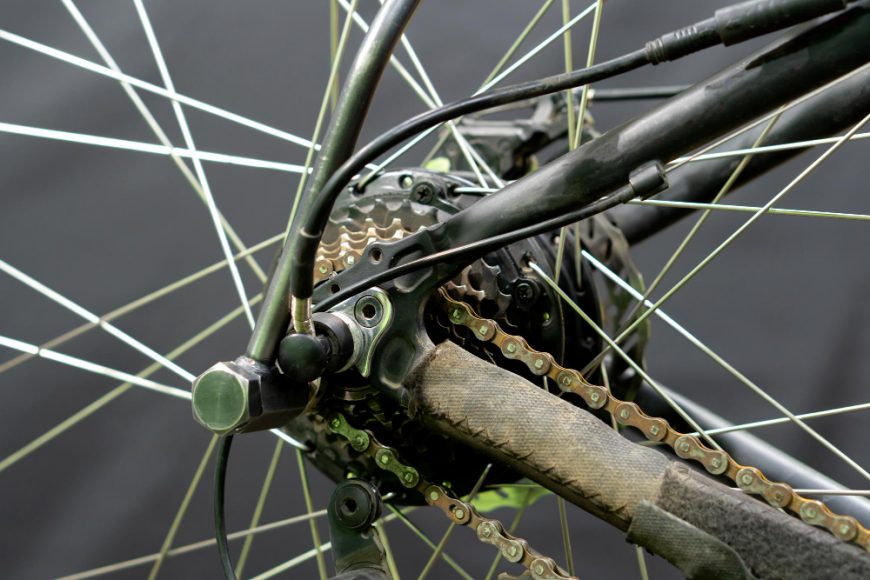
Simple wear and tear is the most common reason why bicycle chains break. The chain links stretch and over time, they become weaker. This is more common when you ride your bike frequently in harsh conditions. The pressure that you put on the chain when you pedal leads to a gradual degradation. Until, finally your chain breaks. According to a study:
The results of this study show that chain wear has a significant impact on chain strength. The average chain strength decreased by 15% for every 1% increase in chain wear. This suggests that chain wear is a major factor in chain breakage
How To Prevent Wear And Tear
- Inspect your chain regularly. Look for signs of elongation and rust.
- If the chain is stretched beyond the recommended limit of 0.75% to 1%, replace it.
- Regularly clean your chain if you do extensive riding.
- Lubricating the chain regularly can extend its lifespan.
2. The Chain Faced A Sudden Impact
Maybe you hit a rock while riding or went over a curb or any other obstacle while you were riding. A sudden impact damages the chain to the extent that it can break. This reason is more common in mountain bikes given the rough terrain they ride on. But any bike chain can fall victim to a sudden impact!
How To Prevent A Sudden Impact
- Be mindful of the terrain you are riding on. When possible, avoid any direct contact with an obstacle.
- Maneuvering skillfully is the best way to prevent the damage caused by a sudden impact.
- When riding in a group, try to maintain a safe distance.
3. You Are Practicing Improper Maintainance
Neglecting chain maintenance and practicing improper maintenance techniques increases the chances of wear and tear of bicycle chains drastically.
Keep your bike in top shape with our bike maintenance tips and enjoy a smooth ride every time.
How To Prevent Improper Maintainance
- Develop a routine maintenance cleaning schedule for your bike.
- When cleaning your bike, pay special attention to the chain.
- Always lubricate!
If you do not know how to clean a bike chain, don’t worry. This guide covers everything that you need to know about cleaning a bike chain.
4. Your Chain Has Rust
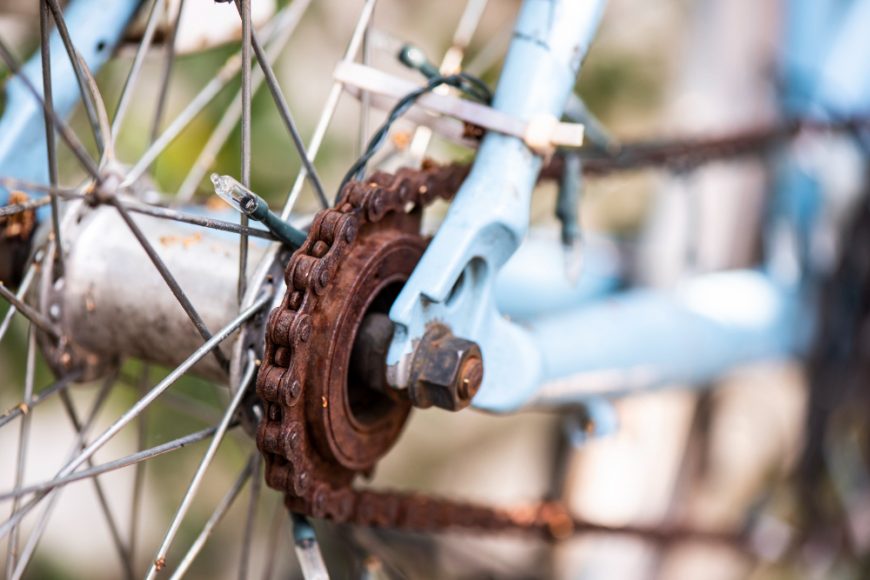
When you do not properly clean and lubricate the chain, it leads to a dirt buildup. This buildup speeds up the wear and tear process. Not lubricating your chain also makes it prone to rust. When this rust eats away the links, your chain will break and fall off.
Rust can be removed! Just follow these simple tips and tricks to get rid of the bike chain rust.
How To Prevent Chain From Rusting
- Properly lubricating the bike chain and keeping it clean will help you avoid rusting problems.
- Do not overdo lubricant application. Doing so leads to a build-up which can give birth to rust.
5. Your Chain Is Not Properly Installed
This is the least-discussed reason but it does happen. In 2018, a study published in Bicycle Quarterly showed that only 1% of chain breaks were due to incorrect installation. But in 2021, another study was published in the journal Engineering Failure Analysis. This study focused on the impact of installation errors on chain strength. It proved that installing a chain with even a single twisted link reduces the chain strength by 20%.
When the chain is not installed properly, extra stress is placed on the chain links. All this stress causes the links to weaken prematurely.
How To Properly Install A Chain
- Always follow the manufacturers’ instructions when installing a new chain.
- Make sure that the chain is the correct length for your bike.
- Properly align the chain with the chainrings and the cassette.
- Adjust the chain tension according to the recommendations.
- Connect the chain ends using a chain tool.
If you are still confused, here is how you can install your bike chain.
6. Manufacturing Defects
Although rare, chains also break due to a manufacturing defect. I read a study published in the journal Engineering Failure Analysis in 2021. This study proved that 2% of chain breaks were due to a manufacturing defect. However, the sample size was very small. So the real number can be higher than this!
Manufacturing defects mostly happen with cheaper chains. That is why, buying high-quality chains is always better. It saves money in the long run
How To Avoid Manufacturing Defects
- Try to invest in high-quality chains from trusted manufacturers. I always buy my chain from Shimano, SRAM, or Wippermann.
How To Fix A Broken Chain
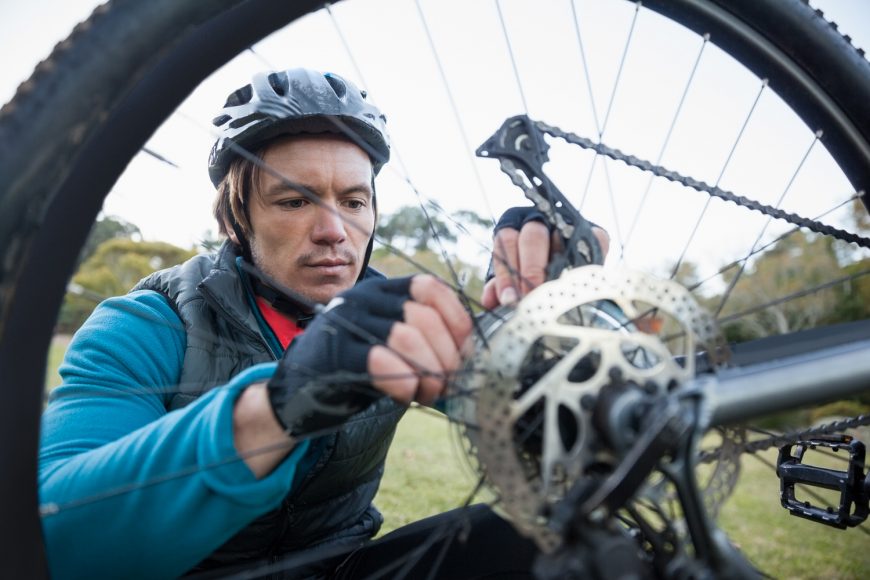
I fell victim to a broken chain just recently. Luckily, I always carry a chain tool in my bike kit to tackle these kinds of unpredictable situations. If you have a master chain, you will have to use a chain tool. Otherwise, you can fix your chain using your hands!
Steps
Here is a step-by-step guide to what I did to fix my broken chain:
- First, shift the gear to the smallest chainring and the largest cog. This makes it easier to maneuver the chain.
- Now locate the broken link. It will either be flared out or have a missing pin.
- Position the chain tool over the broken link in a way that the pins align with the holes present in the chain tool.
- Carefully turn the handle of the tool. It will push out the pin. Remember you don’t have to push the pin all the way through the chain.
- After turning, remove the broken link from your chain.
- Now connect the two ends of the chain. You can use a quick link or the master link to connect the ends. If you have a quick link, you can simply close the link using your hands. A master link cannot be closed without the chain tool. You will need to press the pin into the link using the chain tool.
- Once you have connected the chain, test it by shifting the chain through all your gears. Make sure that the chain is shifting smoothly through all gears.
Expert Tips
- When you are planning to ride in remote areas, it’s better to carry a spare chain and a chain tool.
- For quick links, make sure that the links are closed properly. Or else, the chain will break again.
- For master-link, always ensure that you press the pin all the way into the link. This will help avoid a broken chain.
- Once you have fixed the chain and are done with your ride for the day, clean the chain. After cleaning the chain, you can use a bike chain degreaser. You can also use a chain wax.
Here is a detailed guide on how to wax a chain. Make sure to follow it to avoid any inconvenience
FAQs
Can You Ride A Bike With A Broken Chain?
No, you cannot ride a bike with a broken chain. When the chain breaks, the bike will not propel forward.
What Is The Life Of A Bike Chain?
The life of a bike chain varies from 1,500 to 2,000 miles but only with proper maintenance.
How Do I Know If My Bike Chain Is Bad?
Signs of a bad bike chain include chain noise, skipping gears, and even visible rust.
How Do I Know If My Bike Chain Is Broken?
You will know your bike chain is broken when there is a visible break or the chain becomes physically disconnected.
What Happens If You Ride A Bike With A Rusty Chain?
If you ride a bike with a rusty chain you will experience poor shifting, an accelerated wear and tear of the drivetrain, and a reduced efficiency.
Recap
Regularly inspecting your chain can help you avoid a bicycle chain breakage. By following these tips and preventive measures that I have discussed, you can prolong the life of your chain. So whether you are riding on a trail or out for some serious off-roading, your chain is not going to give up on you!
Have you ever faced a similar situation? Let us know in the comment section below! Remember a little cleaning with a tiny bit of greasing can help you go a long way! Happy Safe Riding.
Also Read:
- Why Is Your Bike So Hard to Pedal? 11 Common Causes and Solutions
- Reasons Why Your Bike Won’t Shift Gears And How To Fix It
- Can You Ride A Bike With A Flat Tire? Let’s Find Out
- How To Fix A Bike Chain – Bike Tips And Maintenance Guide
- How To Adjust The Front Derailleur On A Mountain Bike- Tips And Tricks
Should you have any questions or require further clarification on the topic, please feel free to connect with our expert author Luke Ameen by leaving a comment below. We value your engagement and are here to assist you.


